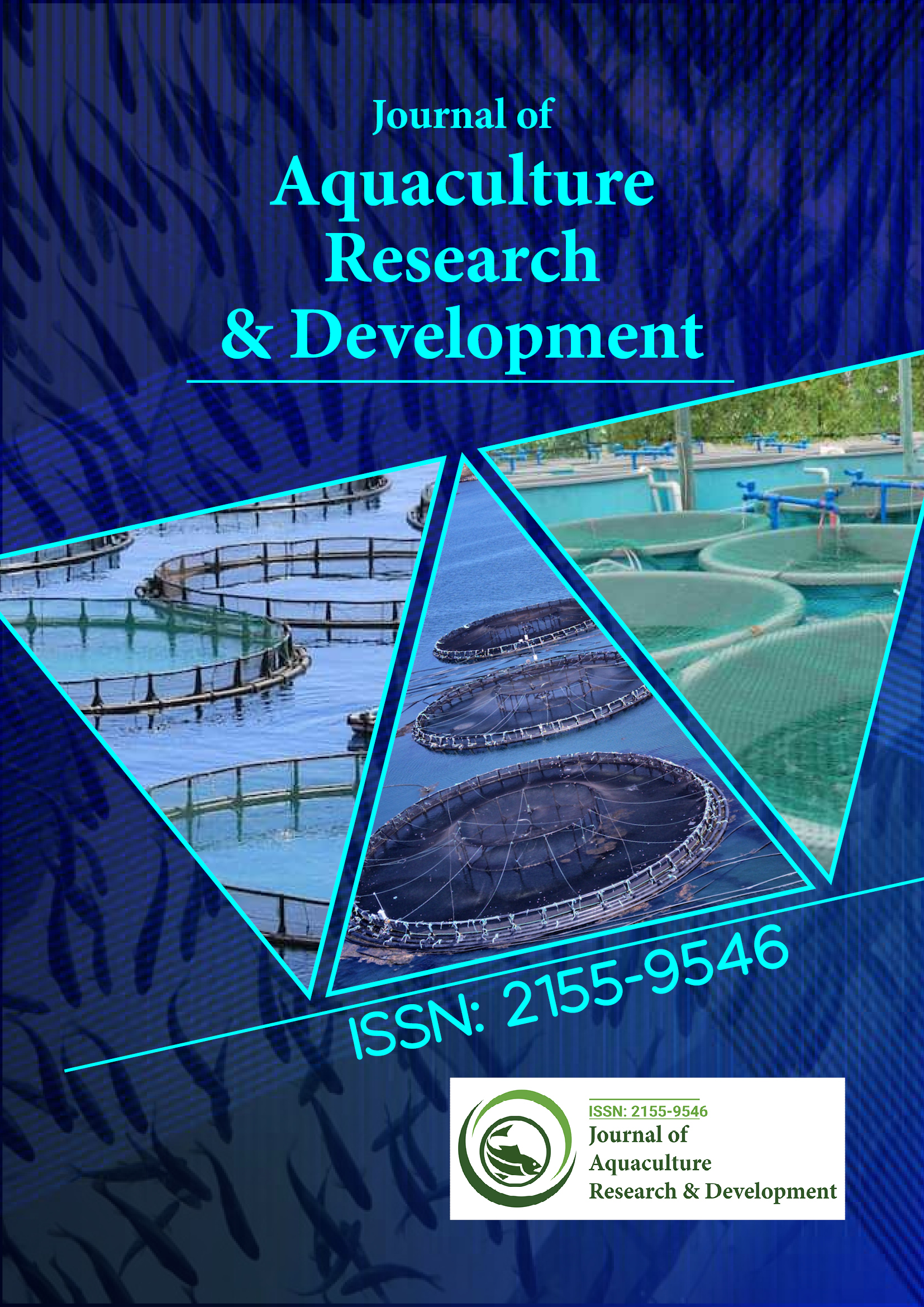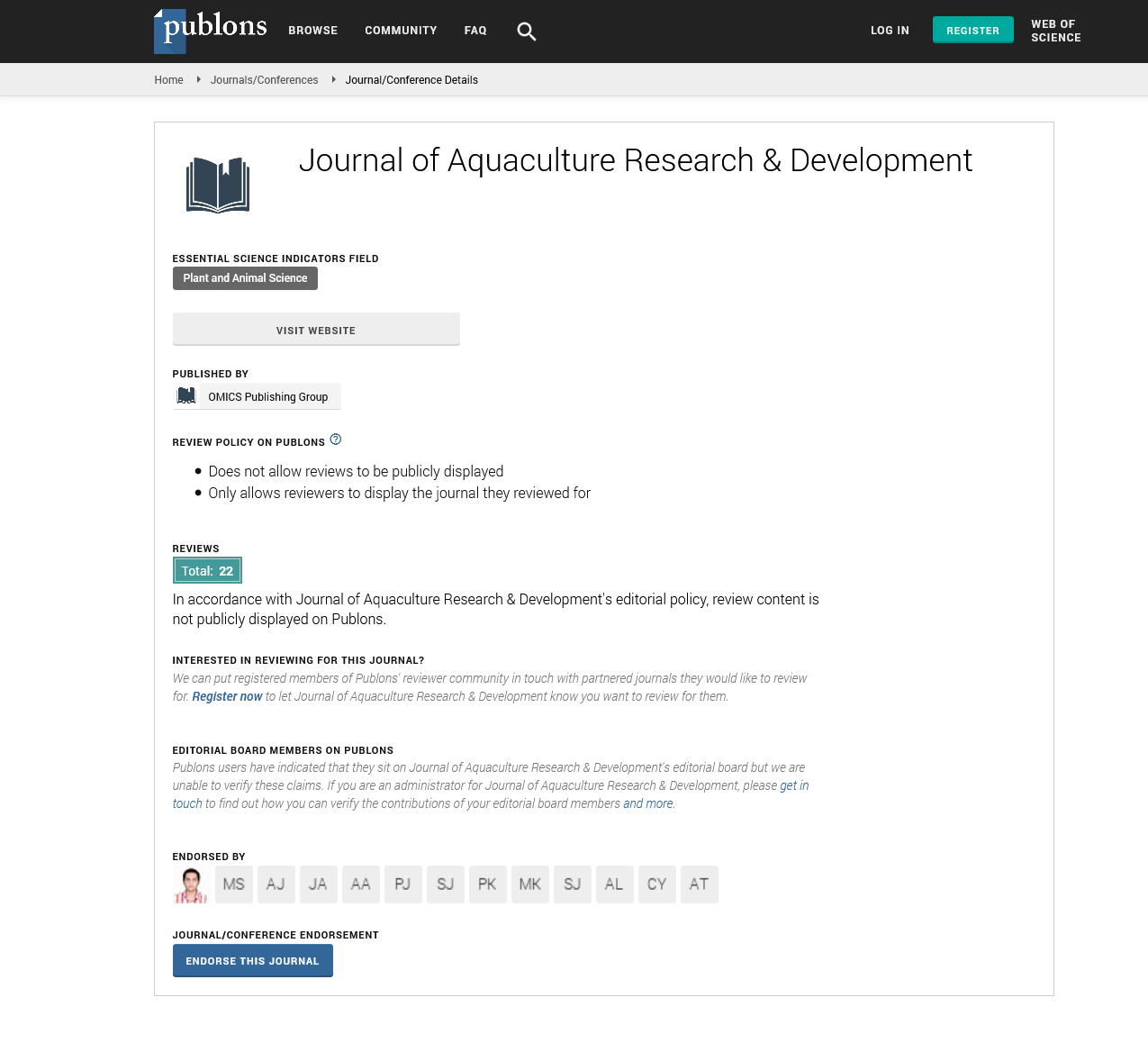Indexed In
- Online Access to Research in the Environment (OARE)
- Open J Gate
- Genamics JournalSeek
- JournalTOCs
- Scimago
- Ulrich's Periodicals Directory
- Access to Global Online Research in Agriculture (AGORA)
- Electronic Journals Library
- Centre for Agriculture and Biosciences International (CABI)
- RefSeek
- Directory of Research Journal Indexing (DRJI)
- Hamdard University
- EBSCO A-Z
- OCLC- WorldCat
- Scholarsteer
- SWB online catalog
- Virtual Library of Biology (vifabio)
- Publons
- MIAR
- University Grants Commission
- Euro Pub
- Google Scholar
Useful Links
Share This Page
Journal Flyer

Open Access Journals
- Agri and Aquaculture
- Biochemistry
- Bioinformatics & Systems Biology
- Business & Management
- Chemistry
- Clinical Sciences
- Engineering
- Food & Nutrition
- General Science
- Genetics & Molecular Biology
- Immunology & Microbiology
- Medical Sciences
- Neuroscience & Psychology
- Nursing & Health Care
- Pharmaceutical Sciences
Perspective - (2025) Volume 16, Issue 5
Temporal Variation of Residue Levels in Shellfish Species
Jakob Moros*Received: 28-Apr-2025, Manuscript No. JARD-25-29681; Editor assigned: 01-May-2025, Pre QC No. JARD-25-29681 (PQ); Reviewed: 15-May-2025, QC No. JARD-25-29681; Revised: 22-May-2025, Manuscript No. JARD-25-29681 (R); Published: 29-May-2025, DOI: 10.35248/2155-9546.25.16.992
Description
The presence of pharmaceuticals in aquatic environments has emerged as a pressing environmental and food safety concern in recent decades. Unlike conventional pollutants, pharmaceuticals are designed to exert biological activity even at very low concentrations, which makes their persistence in the environment particularly worrisome. These compounds enter aquatic ecosystems primarily through municipal wastewater, industrial discharges, agricultural runoff and improper disposal of medications. Once introduced, many of them resist natural degradation processes and remain detectable in surface waters, sediments and aquatic organisms. Among aquatic organisms, bivalve molluscs such as mussels, oysters and clams have received special attention because of their ecological role, wide consumption and unique ability to accumulate waterborne substances through filter-feeding. Seasonal variations in temperature, salinity and hydrodynamic conditions further influence the levels of pharmaceuticals in water and their subsequent accumulation in molluscan tissues, thereby making the issue complex but highly significant.
Pharmaceuticals in aquatic environments
Pharmaceutical contamination in aquatic systems results from a combination of anthropogenic activities and inefficient waste management. Wastewater treatment plants represent one of the largest contributors, as most conventional facilities are not specifically engineered to remove synthetic drugs. Effluents frequently contain residues of antibiotics, analgesics, antidepressants and other therapeutic agents, which are discharged continuously into rivers, estuaries and coastal zones. Agricultural activities also play a substantial role, particularly where veterinary drugs such as antibiotics and antiparasitic compounds are used in livestock farming and aquaculture. These substances often find their way into surrounding waters through surface runoff during rainfall events or through leaching into groundwater. Improper disposal of unused or expired medicines by households, hospitals and pharmacies adds another steady stream of contamination, since medications flushed down sinks or discarded in landfills can leach into aquatic systems. Finally, pharmaceutical manufacturing industries are known sources of highly concentrated discharges, often containing both active pharmaceutical ingredients and chemical intermediates. Seasonal weather patterns, such as heavy monsoon rains or dry periods, modulate the transport and concentration of these compounds, further shaping their environmental distribution.
Bivalve molluscs as bioindicators
Bivalve molluscs are widely recognized as reliable bioindicators for aquatic contaminants due to their sedentary lifestyle and filter-feeding behavior. By filtering large volumes of water each day, they accumulate suspended particles, dissolved organic matter, microorganisms and trace contaminants, including pharmaceuticals. Even when drug residues occur in water at concentrations measured in nanograms per liter, bivalves can bioaccumulate them to levels that are analytically detectable. The extent of accumulation depends largely on the physicochemical properties of the pharmaceutical compounds, such as their solubility, hydrophobicity and molecular weight.
For instance, lipophilic compounds may preferentially accumulate in molluscan tissues rich in lipids, whereas hydrophilic drugs may be more transient but still measurable. Seasonal changes further affect these dynamics. During warmer months, higher metabolic and filtration rates in molluscs may lead to greater uptake of pharmaceuticals, whereas in colder or dormant periods, accumulation may decrease. Because of this ability to mirror environmental contamination over time, bivalves are widely used in monitoring programs such as the “Mussel Watch” projects implemented in several countries.
Pharmaceutical accumulation
Pharmaceutical concentrations in bivalves are rarely static and instead display clear seasonal patterns influenced by both environmental and biological factors. Temperature is one of the most important drivers, as it regulates molluscan metabolic activity, enzymatic processes and filtration rates. In warmer seasons, enhanced metabolism often results in greater uptake and biotransformation of pharmaceuticals, whereas colder periods are associated with slower accumulation. Hydrological variations also play a decisive role. For example, heavy rainfall or flooding during monsoon seasons can flush large amounts of pharmaceuticals from urban, agricultural and industrial areas into coastal environments, leading to short-term spikes in bivalve contamination. Conversely, during dry seasons, reduced river flows can concentrate contaminants in localized areas, prolonging exposure. Biological cycles of molluscs, particularly reproduction, add another layer of complexity. During spawning, when lipid reserves are depleted, the tissue distribution of lipophilic pharmaceuticals changes significantly, altering observed concentrations.
Food safety and ecological implications
The accumulation of pharmaceuticals in edible bivalves has serious implications for both ecosystem health and human food safety. From an ecological standpoint, chronic exposure to antibiotics, analgesics, or psychoactive drugs can disrupt physiological processes in molluscs, including growth, immune function and reproduction. Such disruptions may reduce population resilience and alter benthic community dynamics. For human consumers, the ingestion of contaminated bivalves raises concerns about long-term health risks. Although the concentrations detected in seafood are often below therapeutic thresholds, the cumulative exposure to diverse pharmaceuticals, combined with other environmental contaminants, may have unknown effects.
Citation: Moros J (2025). Temporal Variation of Residue Levels in Shellfish Species. J Aquac Res Dev. 16:992.
Copyright: © 2025 Moros J. This is an open-access article distributed under the terms of the Creative Commons Attribution License, which permits unrestricted use, distribution, and reproduction in any medium, provided the original author and source are credited.

